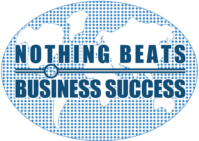“As a mother comforts her child, so I will comfort you.—Isaiah 66:13”
According to Webster’s dictionary, comfort means to give strength and hope; to ease grief or trouble. “Comfort” was the Daily Word’s offering on Saturday supported by the following: “No matter what difficulty you may be facing today, God wants to bring you comfort. Like a mother cares for her child, He longs to give you strength, hope and confidence. Make the decision to put Him first in every area of your life. Let go of those things you know are holding you back. Let Him be Lord over all! As you surrender to His grace, you will be filled with His peace and joy. You’ll be empowered to overcome every obstacle, and you will live in victory all the days of your life”. This comfort concept applies equally whether one is pursuing an employer centred journey through life or whether one has the gumption to pull together idea, innovation, entrepreneurship and shepherding as you nurture an enterprise from start-up to sustainable success.
I am fond of drawing analogies between human health care and business health care. The primary systems of a human body are: circulatory, digestive, endocrine, immune, lymphatic, muscular, nervous, reproductive, respiratory, skeletal, and elimination (urination, defecation, perspiration and respiration). If one does not manage these systems well then our human health care will suffer. Fortunately, the human body, mind and soul have a divine architect and hence the body is robust in the sense that if you are not very efficient at practising human preventive health care, the body will try to heal itself.
The child mortality rate (the death of a child before the child’s fifth birthday) globally declined from 89 per 1000 children (8.9%) in 1990 to 60 per 1000 children (6.0%) in 2009 and 99 % of these deaths occurred in developing nations. Decreasing childhood mortality even further is one of the UN’s millennium development goals (MDG) which focus on human capital needs. Child mortality reduces society’s potential physical, social, and human capital (our greatest asset).
The primary systems of a business are: corporate governance, marketing, operations, human resources development and investment finance. If one does not manage these systems well then our business health care may suffer. Unfortunately, the business systems are manmade and hence the business is fragile in the sense that if you are not very efficient at practising business preventive health care, the business will die. The historical global statistic is that 90% of start-up businesses die within the first four to five years. Compare this with 6% for childhood mortality. What is the corresponding thrust for business with the objective of the MDGs which focus on human capital needs? That is our challenge! We need to develop for good business care the equivalent of the MDGs for good human health care.
If there were a statistic which revealed that 90% of human babies were do die within the first four to five years of their existence we would be horrified and devastated. The world would be in a sad state. But when the 90% failure rate statistic is revealed for business, there is not the same streamlined level of concern about the situation; even though business mortality reduces significantly society’s potential economic capital and hence economic growth and socio-economic well-being of the populace. Remember, economic growth can only take place, one successful enterprise (business) after another. How do we, especially small developing states and emerging nations, rise to the challenge?
It is often said that small and medium-sized enterprise (SMEs) are the main drivers of economic activity on the grounds that a large number of people may be collectively employed in those enterprises. The conventional wisdom seems to be that incumbent political parties are rewarded when unemployment is low and punished when it is high and much political lip service is therefore focused on SME development. Whereas I can understand the emotive outbursts related to an opportunity to decrease unemployment, I do not agree with the thesis that SMEs are the main drivers of economic activity. Reducing unemployment is only one element of economic activity; others would include increasing GDP and keeping inflation under control.
If we think of the tourism sector, for example, the tourism marketing activity drives the sector because the more successful the marketing effort the greater the numbers of long stay and cruise visitors there are and the greater their total spend. We can think of tourism arrivals as the “big” wheel in an economic gearing system consisting of three wheels of differing size. The tourists spend money in hotels and tourism attractions, the “middle” wheel. Various services are provided to the tourists through other enterprises (e.g. restaurants, taxis, handicraft), the small “wheel”. When the big wheel turns one revolution, then the middle wheel turns several revolutions and similarly the small wheel turns several more depending on the gear ratios. So in the second and third wheels many jobs are created but the system is driven by the big marketing wheel. Similarly, for other sectors in the economy.
The big wheel provides a market for the enterprise in the middle wheel and the middle wheel provides a market for the enterprises in the small wheel. If the big wheel slows down, which is the same as saying that the driving force is less, then the economy slows down.
What is true is that the enterprises in the middle and small wheels have to be fed with shepherding and venture capital if there are to be robust and service the market provided by the big and middle wheels, respectively.
